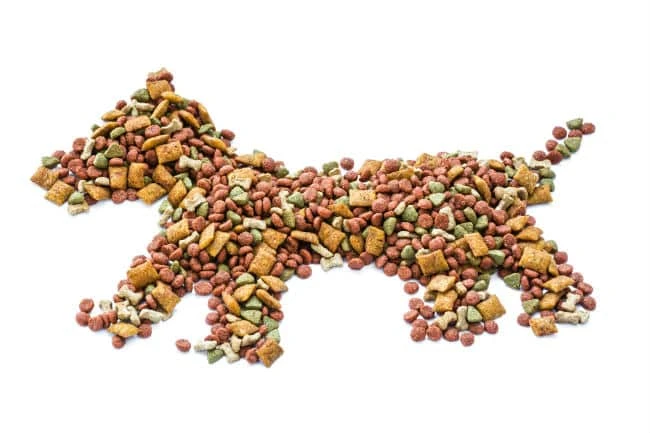The Great Kibble Conundrum: How to Choose the Perfect Dog Food

Dog owners face a seemingly endless array of choices when it comes to selecting the perfect kibble for their furry friends. With so many brands and formulas on the market, it can feel overwhelming to find the right balance between nutrition, taste, and affordability. In this article, we’ll explore the key factors to consider when choosing a dog food blend, providing tips and recommendations to help you make an informed decision for your beloved pet.
Understanding Your Dog’s Nutritional Needs
Just like humans, dogs require a balanced diet that provides them with the essential nutrients needed for optimal health. Understanding your dog’s nutritional needs is the first step in selecting the right food for them. Here’s what you should know about the basic components of a dog’s diet and how they contribute to your pet’s well-being:
Protein: Proteins are the building blocks of your dog’s body, playing a crucial role in muscle growth, tissue repair, and overall health. High-quality protein sources like chicken, beef, fish, and lamb should make up a significant portion of your dog’s diet. The Association of American Feed Control Officials (AAFCO) recommends a minimum of 18% protein for adult dogs and 22% for puppies in dry dog food.
Fats: Fats provide a concentrated source of energy and are essential for maintaining healthy skin, coat, and immune system function. Omega-3 and omega-6 fatty acids, found in fish oil and flaxseed, are particularly beneficial for promoting brain development in puppies and reducing inflammation in older dogs. AAFCO guidelines suggest a minimum of 5% fat for adult dogs and 8% for puppies in dry dog food.
Carbohydrates: Carbohydrates offer a quick source of energy and help with digestion. While dogs don’t necessarily need carbohydrates in their diet, they can benefit from the inclusion of healthy, complex carbs like whole grains, vegetables, and fruits. These sources provide essential nutrients, vitamins, and minerals while promoting a healthy gut and stable energy levels throughout the day. Be cautious of dog foods with excessive amounts of filler ingredients like corn, wheat, and soy, as these can contribute to weight gain and offer little nutritional value.
Vitamins and Minerals: A well-balanced dog food should also contain an assortment of essential vitamins and minerals that support various bodily functions. For example, calcium and phosphorus are vital for strong bones and teeth, while vitamins A, C, and E serve as antioxidants and support immune health. Look for dog foods that are fortified with these essential nutrients or include natural sources like fruits and vegetables.
Fiber: Dietary fiber helps maintain a healthy digestive system by promoting regular bowel movements and supporting the growth of beneficial gut bacteria. Healthy sources of fiber in dog food include ingredients like peas, beans, and beet pulp. The appropriate amount of fiber varies based on your dog’s age, size, and activity level, but a general guideline is to aim for 2-4% fiber content in dry dog food.
Water: Hydration is crucial for your dog’s overall health, as it aids in digestion, nutrient absorption, and temperature regulation. While wet dog food typically contains around 75% water, dry dog food has significantly less. Ensure your dog always has access to fresh, clean water, especially if they primarily consume dry kibble. Monitor their water intake and adjust it based on their size, activity level, and the weather conditions to prevent dehydration.
Life Stage and Activity Level: Your dog’s nutritional needs will vary depending on their life stage, size, and activity level. Puppies, for instance, require more protein and calories to support their rapid growth and development. Large breed dogs may need specially formulated diets to address their unique dietary requirements and prevent joint issues. Senior dogs often require fewer calories to maintain a healthy weight, along with added nutrients that support joint health and cognitive function. Active dogs, such as working or athletic breeds, will need a higher calorie intake to fuel their energy demands.
Special Dietary Needs: Some dogs may have specific dietary needs due to allergies, food sensitivities, or medical conditions. In such cases, it’s crucial to work closely with your veterinarian to select a dog food that caters to these unique requirements. Hypoallergenic or limited-ingredient diets, for example, can be beneficial for dogs with food allergies, while prescription diets may be necessary for dogs with medical conditions like diabetes or kidney disease.
By understanding your dog’s nutritional needs and considering their age, size, activity level, and any special dietary requirements, you’ll be better equipped to choose a high-quality dog food that supports their overall health and well-being. Don’t be afraid to consult your veterinarian for personalized recommendations, as they can provide
valuable insight into your dog’s specific needs and preferences. Regular check-ups and discussions with your vet will also help you monitor your dog’s health and make any necessary adjustments to their diet as they grow and their needs change.
Remember that every dog is unique, and what works for one might not be suitable for another. It’s essential to be patient and open to trying different dog food brands and formulas until you find the one that best meets your dog’s nutritional requirements and taste preferences. Keep an eye on your dog’s energy levels, coat condition, weight, and overall demeanor to gauge how well they’re responding to their current diet. Any sudden changes or concerns should be promptly discussed with your veterinarian to determine if a dietary adjustment is necessary.
In conclusion, understanding your dog’s nutritional needs is a crucial aspect of selecting the right dog food for them. By considering factors like protein, fat, carbohydrates, vitamins, minerals, fiber, water, life stage, activity level, and any special dietary needs, you can make an informed decision that promotes your dog’s health and happiness. Don’t hesitate to consult your veterinarian for guidance and support throughout this process, as their expertise will be invaluable in ensuring your dog receives the best possible nutrition.
Deciphering Dog Food Labels
Navigating the world of dog food labels can be confusing, but understanding the key components and terminology will help you make informed decisions about your dog’s diet. Here’s a breakdown of the essential elements to look for when evaluating dog food labels:
a. Ingredient List: Dog food labels must list their ingredients in descending order by weight. This means the first few ingredients typically make up the largest portion of the food. Look for high-quality protein sources, like named meats or meat meals (e.g., chicken, beef, lamb), as the primary ingredients. Be cautious of foods with unspecified meat sources (e.g., “meat meal” or “animal by-products”), as these can indicate lower quality ingredients.
b. Guaranteed Analysis: The guaranteed analysis provides information on the minimum or maximum percentages of specific nutrients in the food. It includes crude protein, crude fat, crude fiber, and moisture content. Compare these percentages to the AAFCO guidelines for your dog’s life stage to ensure the food meets their minimum nutritional requirements.
c. AAFCO Nutritional Adequacy Statement: Look for an Association of American Feed Control Officials (AAFCO) statement on the label, which indicates that the food meets the minimum nutritional requirements for a specific life stage (e.g., adult maintenance or growth). This statement is a good starting point to ensure the food is nutritionally complete and balanced.
d. Net Weight and Feeding Guidelines:
The net weight indicates the total amount of food in the package, which can be helpful when comparing costs and serving sizes between different brands. Feeding guidelines offer a general recommendation for the daily amount of food to feed your dog based on their weight. Keep in mind that these guidelines are a starting point and may need to be adjusted based on your dog’s age, activity level, and individual needs. Regularly monitor your dog’s weight and consult your veterinarian to determine the most appropriate feeding amounts.
e. Expiration or “Best By” Date: Always check the expiration or “best by” date on the dog food packaging to ensure it’s fresh and safe for consumption. Storing dry dog food in a cool, dry place and using airtight containers can help maintain its freshness and prevent spoilage.
f. Manufacturer Information: The label should include contact information for the dog food manufacturer, allowing you to reach out with any questions or concerns about the product. It’s also a good idea to research the company’s reputation, manufacturing practices, and any history of recalls to gauge the overall quality and safety of their products.
g. Special Claims: Be cautious of marketing buzzwords like “natural,” “holistic,” or “premium” on dog food labels, as these terms are not strictly regulated and can be misleading. Focus instead on the ingredient list,
guaranteed analysis, and AAFCO statement to assess the quality of the food. Additionally, any claims regarding specific health benefits or the treatment of medical conditions should be supported by scientific research or an AAFCO-defined nutrient profile.
h. Grain-Free and Limited Ingredient Diets: If your dog has food sensitivities, allergies, or specific dietary needs, you may be considering a grain-free or limited ingredient diet. Look for clear labeling that indicates the food is free of specific ingredients (e.g., “grain-free” or “soy-free”) or contains a limited number of components to minimize the risk of triggering allergies. Always consult your veterinarian before making significant changes to your dog’s diet to ensure their nutritional needs are met.
By learning how to decipher dog food labels, you’ll be better equipped to evaluate the quality and suitability of different products for your pet. Keep in mind that while labels can provide valuable information, they shouldn’t be the sole basis for choosing a dog food. Consult with your veterinarian, read reviews from other pet owners, and consider your dog’s specific nutritional needs and preferences to make an informed decision that promotes their overall health and well-being.
Grain-Free vs. Grain-Inclusive Diets
The ongoing debate between grain-free and grain-inclusive dog foods can leave pet owners uncertain about the best choice for their furry companions. Understanding the benefits and drawbacks of each type of diet will help you determine which option is most suitable for your dog.
Grain-Free Diets:
Grain-free dog foods exclude grains such as wheat, corn, and rice, and instead use alternative carbohydrate sources like potatoes, peas, or legumes. The primary benefits of grain-free diets include:
a. Reduced Allergens: Some dogs may have grain allergies or sensitivities, resulting in symptoms like itching, digestive issues, or skin problems. For these dogs, a grain-free diet can help alleviate symptoms and improve overall health.
b. Lower Glycemic Index: Grain-free diets typically have a lower glycemic index than grain-inclusive diets, which means they cause a slower, steadier rise in blood sugar. This can be beneficial for dogs with diabetes or those prone to weight gain.
Grain-Inclusive Diets:
Grain-inclusive dog foods contain grains such as rice, barley, oats, or quinoa, which can offer several benefits:
a. Nutritional Value: Whole grains provide valuable nutrients, including vitamins, minerals, and fiber, which contribute to a balanced diet and support overall health.
b. Cost-Effectiveness: Grain-inclusive diets are often more affordable than grain-free options, making them an attractive choice for budget-conscious pet owners.
c. Potential Heart Health Benefits: Recent studies have suggested a possible link between grain-free diets and an increased risk of dilated cardiomyopathy (DCM), a type of heart disease, in some dogs. While more research is needed to establish a definitive connection, some veterinarians recommend opting for grain-inclusive diets as a precautionary measure.
Choosing Between Grain-Free and Grain-Inclusive Diets:
When deciding between a grain-free and grain-inclusive diet for your dog, consider the following factors:
- Allergies or Sensitivities: If your dog has a confirmed allergy or sensitivity to grains, a grain-free diet may be the best option. Always consult with your veterinarian before making significant changes to your dog’s diet to address potential allergies.
- Nutritional Needs: Both grain-free and grain-inclusive diets can provide balanced nutrition for your dog when formulated correctly. Focus on the overall quality of the ingredients, the guaranteed analysis, and the AAFCO statement to ensure the food meets your dog’s nutritional requirements.
- Personal Preference: Some dogs may have a taste preference for grain-free or grain-inclusive foods. It’s essential to find a diet that your dog enjoys eating and that maintains their optimal health.
- Veterinary Advice: Consult with your veterinarian about the most appropriate diet for your dog, considering their breed, age, size, activity level, and any specific health concerns.
In conclusion, the choice between grain-free and grain-inclusive dog foods ultimately depends on your dog’s individual needs and preferences. By considering factors such as allergies, nutritional requirements, taste preferences, and veterinary advice, you can make an informed decision that supports your dog’s overall health and well-being.
The Role of Life Stage and Breed in Choosing Dog Food
A dog’s nutritional needs vary depending on their life stage and breed, making it essential to select a dog food that caters to these unique requirements. Here’s an overview of how life stage and breed can impact your dog’s dietary needs and influence your choice of dog food:
Life Stage:
- Puppy: Puppies have higher energy and protein requirements than adult dogs to support their rapid growth and development. Look for dog foods specifically formulated for puppies, with higher protein and fat content, as well as essential nutrients like calcium and phosphorus for strong bones and teeth. Remember to transition your puppy to adult dog food at the appropriate age, which can vary depending on their size and breed.
- Adult: Adult dogs require a balanced diet that meets their maintenance needs without promoting excessive weight gain. Choose a dog food formulated for adult maintenance, with adequate protein, fat, and fiber content to support overall health. Keep an eye on your dog’s weight and activity level, adjusting their food intake as needed to maintain a healthy body condition.
- Senior: As dogs age, their metabolism slows down, and their energy requirements decrease. Senior dogs may also develop age-related health concerns like joint issues or cognitive decline. Select a dog food formulated for seniors, with lower calorie content to prevent weight gain, and added nutrients like omega-3 fatty acids and antioxidants to support joint health and cognitive function.
Breed:
- Small Breeds: Small breed dogs have higher metabolic rates and require more calories per pound than larger breeds. Look for dog foods specifically formulated for small breeds, with smaller kibble size for easier consumption and higher calorie density to meet their energy needs.
- Large Breeds: Large breed dogs have unique nutritional requirements to support their larger size and prevent joint issues. Choose a dog food designed for large breeds, with appropriate calcium and phosphorus levels to promote strong bones and controlled calorie content to prevent excessive weight gain, which can strain joints.
- Breed-Specific Health Concerns: Some breeds may have specific health concerns or predispositions that can be addressed through their diet. For example, Dalmatians are prone to urinary stones and may benefit from a diet with lower purine content, while Labrador Retrievers are prone to obesity and may require a diet with controlled calorie content. Consult with your veterinarian about any breed-specific dietary considerations for your dog.
By considering your dog’s life stage and breed when selecting a dog food, you can better cater to their unique nutritional needs and promote their overall health and well-being. Always consult with your veterinarian for personalized recommendations based on your dog’s specific requirements and any existing health concerns.
Top 5 Dog Food Brands to Consider
While there are numerous dog food brands available in the market, it’s essential to choose one that uses high-quality ingredients and meets your dog’s specific nutritional requirements. Here are five popular and reputable dog food brands to consider, each offering a range of products to cater to various life stages, breeds, and dietary needs. Keep in mind that this list is not exhaustive, and there may be other suitable brands for your dog’s needs.
- Orijen: Orijen is known for its biologically appropriate, high-protein dog foods made from fresh, regionally sourced ingredients. Their formulas contain a high percentage of named meats, as well as fruits, vegetables, and essential nutrients. Orijen offers a variety of grain-free options, as well as specific recipes for different life stages and breed sizes.
- Blue Buffalo: Blue Buffalo offers a wide range of dog foods, including their signature Life Protection Formula, Wilderness, and Basics lines. Their products feature real meat as the first ingredient, along with whole grains, fruits, and vegetables. They provide grain-free, limited ingredient, and breed-specific options to suit various dietary needs.
- Royal Canin: Royal Canin is a well-established brand that offers tailored nutrition for different dog breeds, sizes, and life stages. They also provide veterinary-exclusive diets for dogs with specific health concerns. Their formulas are backed by scientific research and are designed to address the unique nutritional needs of each dog.
- Wellness: Wellness is known for its natural, high-quality dog foods made with wholesome ingredients. Their product lines include Wellness Complete Health, CORE (grain-free), and Simple (limited ingredient). They offer options for different life stages, breed sizes, and dietary needs, ensuring a balanced and nutritious diet for your dog.
- Canidae: Canidae offers a range of premium dog foods made with high-quality proteins, whole grains, and fresh fruits and vegetables. Their products cater to various life stages, breed sizes, and dietary requirements, with grain-free and limited ingredient options available. Canidae emphasizes transparency in their sourcing and manufacturing processes, ensuring the safety and quality of their products.
When selecting a dog food brand for your pet, consider factors such as ingredient quality, nutritional adequacy, and suitability for your dog’s life stage, breed, and specific dietary needs. Consult with your veterinarian for personalized recommendations and be open to trying different brands and formulas to find the one that best meets your dog’s requirements and taste preferences.
Making the Switch: Transitioning to a New Dog Food
Whether you’re introducing a new dog to your home, addressing a dietary issue, or simply trying a different brand, transitioning your dog to a new food requires a gradual approach to avoid digestive upset. Here’s a step-by-step guide to help you successfully switch your dog’s food:
- Consult Your Veterinarian: Before making any significant changes to your dog’s diet, consult with your veterinarian to ensure the new food is appropriate for your pet’s age, breed, size, and specific health needs.
- Mix the Old and New Foods: Gradually introduce the new food by mixing it with your dog’s current food. Start with a ratio of about 75% old food to 25% new food, and gradually adjust the proportions over the course of 7-10 days. This slow transition allows your dog’s digestive system to adapt to the new food, minimizing the risk of gastrointestinal issues like diarrhea, vomiting, or gas.
- Monitor Your Dog’s Response: Keep an eye on your dog’s reaction to the new food, including their appetite, energy levels, stool consistency, and overall demeanor. Any sudden or concerning changes should be discussed with your veterinarian to determine if the new food is suitable or if further adjustments are needed.
- Adjust Feeding Amounts: When switching to a new dog food, it’s important to follow the feeding guidelines on the label, as different foods have varying calorie content and nutrient density. Monitor your dog’s weight and adjust their food intake as needed to maintain a healthy body condition. Consult your veterinarian for guidance on determining the appropriate feeding amounts for your dog.
- Be Patient and Persistent: Some dogs may be hesitant to try new foods or may take longer to adjust to a new diet. Be patient during the transition period and avoid offering table scraps or treats as a substitute for their regular meals, as this can reinforce picky eating habits.
By following these steps and working closely with your veterinarian, you can transition your dog to a new food in a safe and controlled manner, ensuring their ongoing health and well-being.
In conclusion, choosing the right dog food is essential for your pet’s health and well-being. By understanding your dog’s nutritional needs, deciphering dog food labels, considering grain-free vs. grain-inclusive diets, accounting for life stage and breed, exploring reputable dog food brands, and transitioning to a new dog food gradually, you can make informed decisions about your dog’s diet. Remember to consult with your veterinarian for personalized recommendations and to address any specific health concerns or dietary needs.
Your dog’s diet plays a crucial role in their overall health, so it’s worth investing the time and effort to find the best food for their unique needs. Stay informed, ask questions, and be open to trying different brands and formulas to find the one that best meets your dog’s requirements and taste preferences. With the right nutrition, you can help ensure a long, happy, and healthy life for your furry companion.





